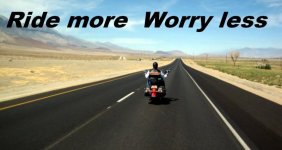Have been reading many other posts with suggestions about 'best' shifting practices to be followed. As a new owner of a 2017 F3L, I have been trying to 'learn' where my ryde feels best when slowing up. My background has been several sports cars over time, and a 250 Suzuki 'Hustler' 35 years ago, where manual downshifting and keeping revs up (moderately) was a long-standing habit. My 2017 F3L SE6 can do all the necessary downshifting by itself and, at first, I let it do its own thing. However, as I become more accustomed to it, and with my riding becoming faster as the miles progress, I seem to sense that the automatic downshifting takes place later and slower than I would instinctively do manually. The old sports car debate used to be - which do you want to wear out first: your clutch or your brakes? Aggressive down-shifters would gamble on their clutch; others just braked harder and more often.
My point with my new F3 is: left to myself, I'm inclined to approach my stops and slow-downs by twitching my left index finger and run down through the gears more so than by braking. So far, it works very smoothly, my brake pedal only comes into play very late, and by then I'm already down to 3rd or 2nd, without waiting for the computer. Usually, though, I let the computer do the final downshift to 1st. I find the computer-guided 'slows' to be rather late, and more jerky, especially that last downshift or two. Looking for experienced commentary on my technique; maybe I'll still have original brakes long after doing work on clutch or auto-shift paddle? Critical advice welcome; my feelings won't be hurt. I'm trying to learn from your experiences.

